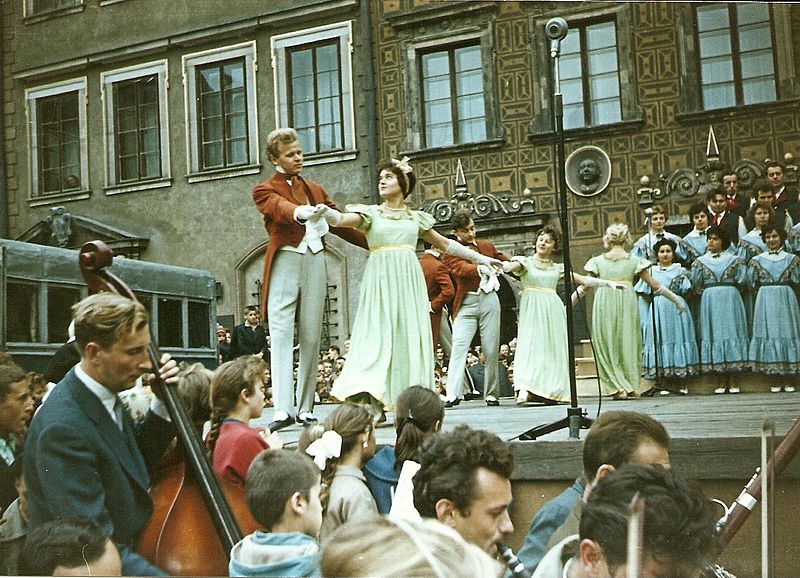Chopin, Polonaise in A-Flat, op. 53
 The Polonaise is a stately processional dance used in various ceremonial occasions, but particularly in weddings. It has its roots in Polish folk music with melodies consisting of short phrases typically cast in triple meter. In its earliest forms it was both sung and danced.
The Polonaise is a stately processional dance used in various ceremonial occasions, but particularly in weddings. It has its roots in Polish folk music with melodies consisting of short phrases typically cast in triple meter. In its earliest forms it was both sung and danced.
You may have heard Professor Carol talk about the musicologists who collected and catalogued folk music: Bartók and Kodály in Hungary, Grainger in England, John and Alan Lomax in America. The Polish ethno-musicologist Oskar Kolberg (1814-1890) did the same with Polish folk music, and precursors of the polonaise can be found in his collection.
But while the form that we know as the Polonaise has its roots in Poland, it was developed primarily in other countries. It got its name in France in the 17th century, and it was especially popular in Germany and Scandinavia. It gradually worked its way up the social ladder from a peasant dance accompanied by singing to a court dance with purely instrumental accompaniment.
Baroque composers such as Bach and Handel wrote Polonaises. Beethoven composed one. But Chopin (1810-1849), the Polish exile writing in Paris, is most closely associated with the form. He transformed the Polonaise into a symbol of Polish Nationalism.
Józef Reiss and Maurice Brown write in Groves:
The great Polonaise in A-flat op. 53 exploits all the dramatic possibilities inherent in the polonaise, and is probably the finest example of the form in all music.
The form retained its popularity with late Romantic composers such as Liszt and Wagner. Tchaikovsky incorporated the form into Sleeping Beauty and his opera Eugene Onegin.
While few people outside Poland dance the Polonaise today, it is taught regularly to school children and remains an essential feature of formal festive events including the Polish equivalent of the high school prom.



